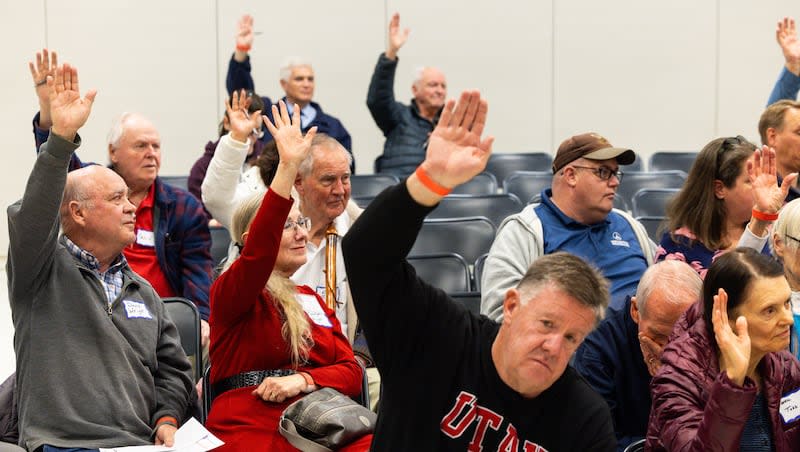Utah’s caucus-convention system leaves young families behind

As parents of young kids, my peers and I care deeply about the state of politics and how policies will shape our children’s futures. We want to be politically engaged. And I assume that politicians want us to be engaged and to understand our values and priorities for our children who represent the future of our state.
But the time commitment of neighborhood caucus meetings and the nominating convention for the majority party in our state makes it nearly impossible for parents with young children to be involved in an important part of the political process.
This year, only 9% of registered Republicans participated in their neighborhood’s caucus night. I know only a few people my age (millennials) who were able to attend that Tuesday evening in the middle of homework, music lessons, sports and getting everyone fed and in bed. I don’t know any parents who were able to find a babysitter and attend together. Those who did attend were there for hours, and I know more than one person who attempted to attend their caucus meeting but became overwhelmed by the chaos, disorganization and long lines and left.
Of those 9% who braved the chaos, just over 4,000 were elected state delegates by their neighborhood caucuses. Those delegates lined up starting at 7 a.m. at the Republican state nominating convention on Saturday.
Voting on the candidates began much later than expected, and the convention, which was scheduled to conclude at 6 p.m., adjourned at midnight. Some delegates, those few who stuck it out until the end, were at the convention from 7 a.m. to midnight. Seventeen hours.
I know almost no one in my stage of life who can afford to spend 17 hours of a weekend at a political convention. Our weekend schedules are packed with child and family commitments that require intense schedule coordination. Even if we were able to hire a sitter who could juggle all those commitments, it would cost hundreds of dollars. That’s not a time or dollar investment many parents can, or are willing to make.
Which is maybe part of the reason why the results of our state’s caucus-convention system so often do not reflect the results of the primary when all registered Republicans in the state cast their votes. More often than not, candidates selected at the convention lose their primary election. Gov. Spencer Cox, for example, lost the latest state convention to challenger Phil Lyman even though polls suggest Cox is expected to win reelection by a wide margin.
So who does the caucus-convention system actually represent? Is it only those without kids at home, people with hours to spare to attend their caucus meetings and then the convention? That doesn’t feel truly representative of the state with the youngest median age in the nation and only 10% of the population over the age of 65.
The long-term consequences of a system that inadvertently excludes young families are underrepresentation of the needs and priorities of families and potential apathy among younger voters toward a system that feels designed to exclude them. That is likely not what the powers that be want. But it’s what will inevitably happen.
There are many good reasons why the caucus-convention system should exist. As proponents often argue, the caucus-convention system allows candidates who are short on cash to get on the primary ballot without going through the expensive process of collecting signatures. It also gives citizen delegates more opportunities to meet with candidates and become involved at a grassroots level.
And the idea that the caucus meetings bring neighbors together in civic engagement is a good one. But the way the caucus meetings are currently organized — or rather, disorganized — makes it nearly impossible for young people with families to participate. A by-mail primary, ballot drop off, or even virtual convention option could help make it more possible for many.
If we truly want citizens to get involved, and stay involved, in our state’s majority party’s nominating process, and if we want the candidates selected by a party to actually reflect the majority of voters’ values and priorities, the system needs to be streamlined to allow parents to participate.

